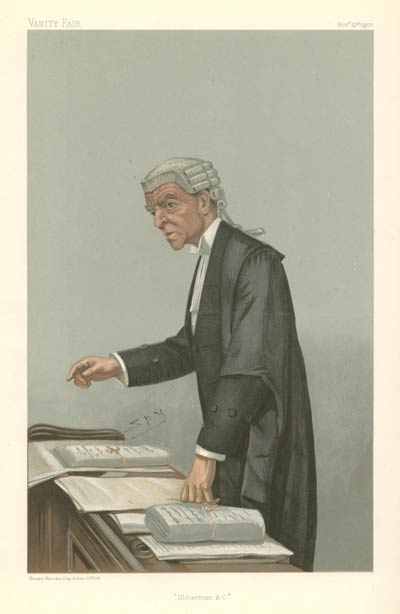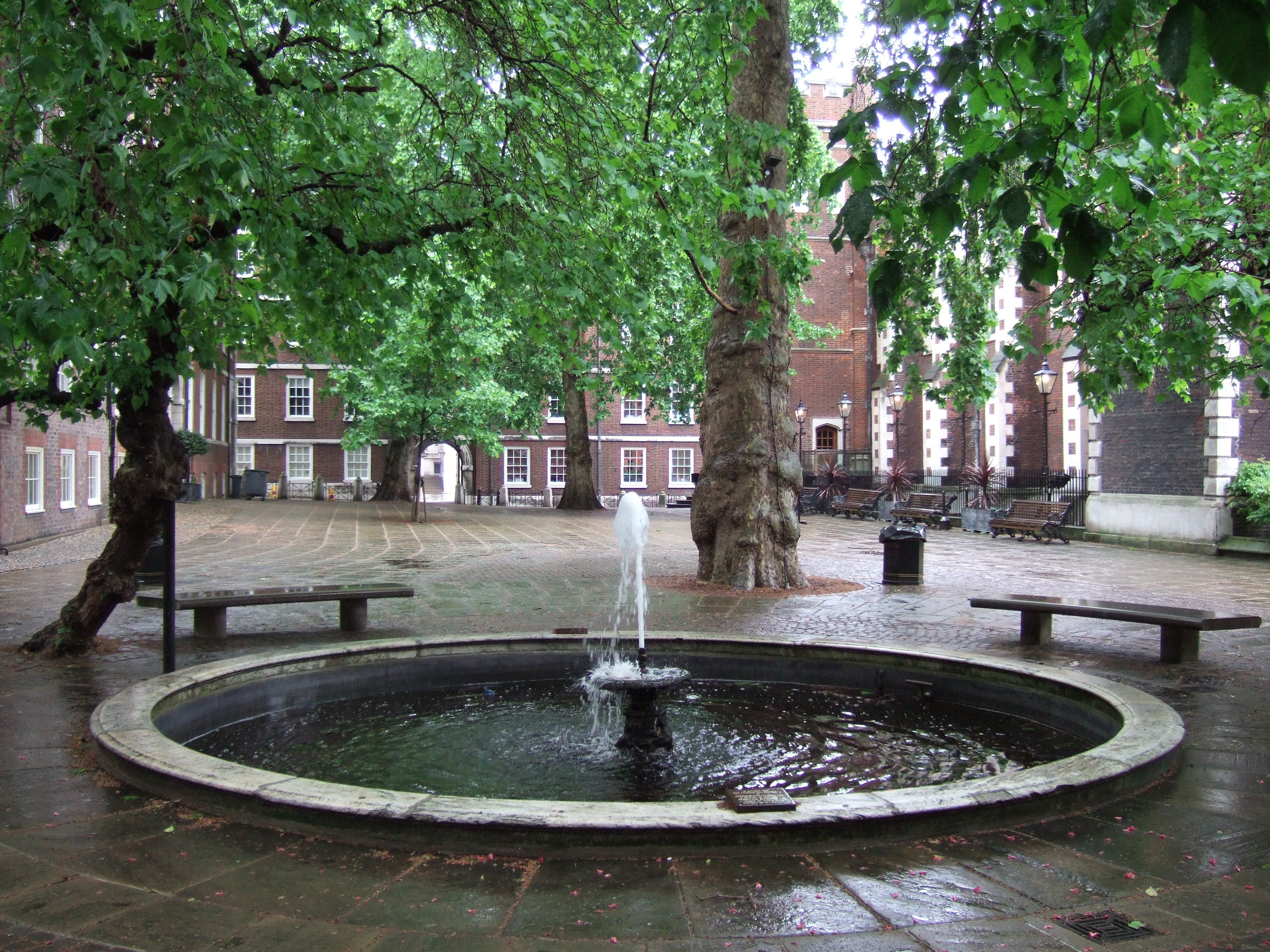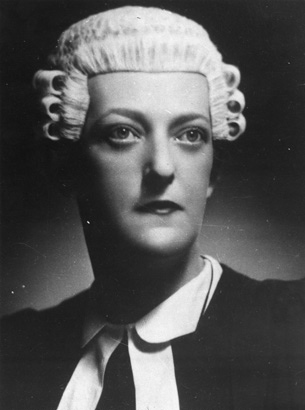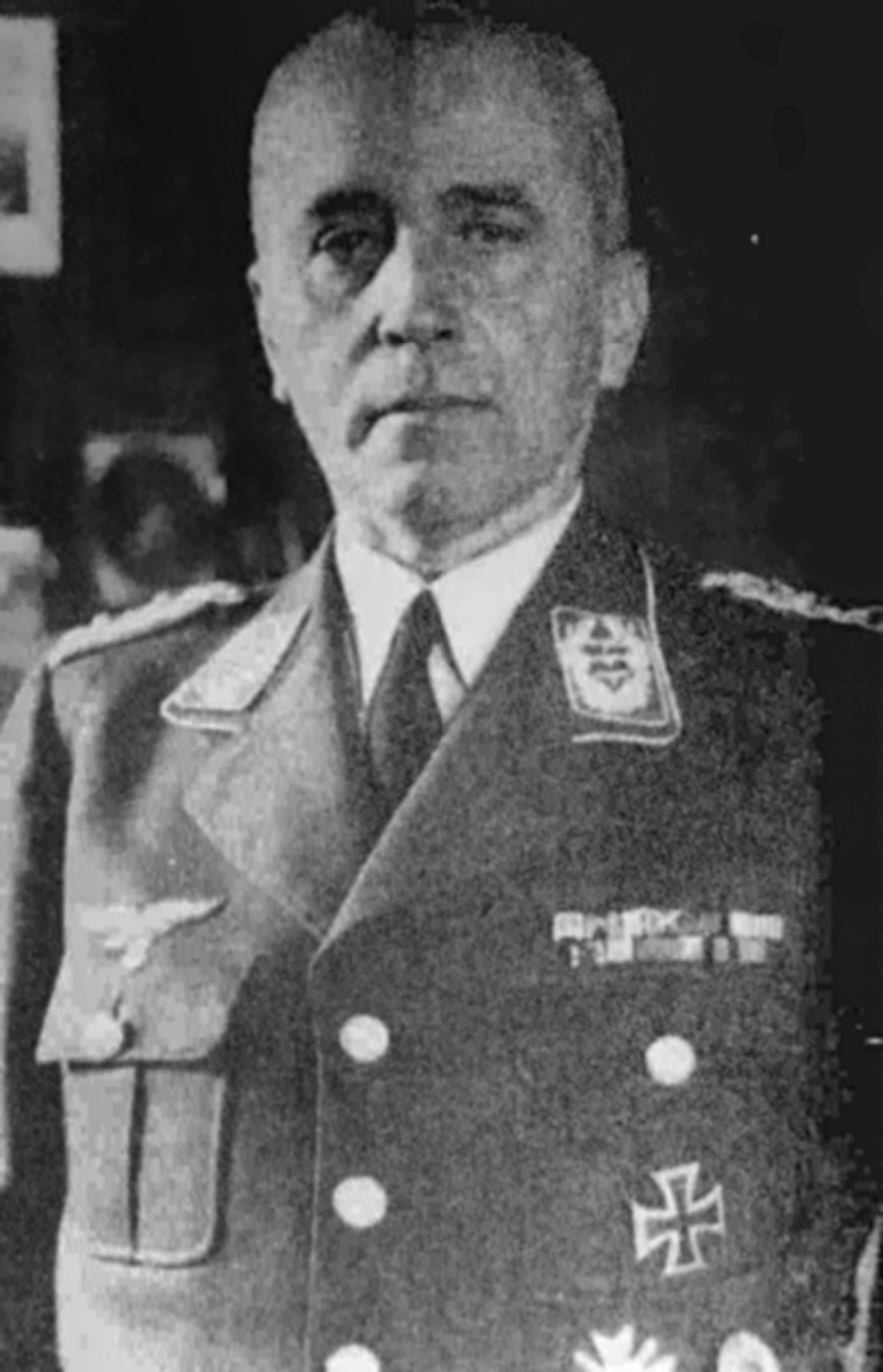|
Peter Thomas, Baron Thomas Of Gwydir
Peter John Mitchell Thomas, Baron Thomas of Gwydir, (31 July 1920 – 4 February 2008) was a British Conservative politician. He was the first Welshman to become Chairman of the Conservative Party, serving from 1970 to 1972, and the first Conservative to serve as Secretary of State for Wales, holding that office from 1970 to 1974. Early life and career Thomas was born in Llanrwst, where his father was a solicitor. He was educated at the village school, and then Epworth College in Rhyl, before reading law at Jesus College, Oxford. He joined the Royal Air Force (RAF) in 1939, on the outbreak of the Second World War. He was shot down while serving as a bomber pilot in 1941, and spent four years in prisoner-of-war camps in Germany, moving from Stalag Luft VI to Stalag Luft III and then at Stalag XI-B. He continued his legal studies while imprisoned, and was also an amateur actor. He became a barrister after the war, and was called to the Bar in 1947 at Middle Temple. He practised ... [...More Info...] [...Related Items...] OR: [Wikipedia] [Google] [Baidu] |
The Right Honourable
''The Right Honourable'' (abbreviation: The Rt Hon. or variations) is an honorific Style (form of address), style traditionally applied to certain persons and collective bodies in the United Kingdom, the former British Empire, and the Commonwealth of Nations. The term is predominantly used today as a style associated with the holding of certain senior public offices in the United Kingdom, Canada, New Zealand, and, to a lesser extent, Australia. ''Right'' in this context is an adverb meaning 'very' or 'fully'. Grammatically, ''The Right Honourable'' is an adjectival phrase which gives information about a person. As such, it is not considered correct to apply it in direct address, nor to use it on its own as a title in place of a name; but rather it is used in the Grammatical person, third person along with a name or noun to be modified. ''Right'' may be abbreviated to ''Rt'', and ''Honourable'' to ''Hon.'', or both. ''The'' is sometimes dropped in written abbreviated form, but is ... [...More Info...] [...Related Items...] OR: [Wikipedia] [Google] [Baidu] |
Rhyl
Rhyl (; , ) is a seaside town and community in Denbighshire in Wales. The town lies on the coast of North Wales, at the mouth of the River Clwyd. To the west is Kinmel Bay and Towyn, to the east Prestatyn, and to the south-east Rhuddlan and St Asaph. At the 2011 Census, Rhyl had a population of 25,149, with Rhyl–Kinmel Bay having 31,229. Rhyl forms a conurbation with Prestatyn and its two outlying villages, the Rhyl/Prestatyn Built-up area, whose 2011 population of 46,267 makes it North Wales's most populous non-city. Rhyl was once an elegant Victorian resort town, but suffered rapid decline around the 1990s and 2000s; attempts have been made to reverse this through county investment, equal to around £15 million from Denbighshire County, however, the outcomes have been perceived with varying levels of success. Prior to being in Denbighshire since 1996, it was in the Clwyd district of Rhuddlan, and before that the historic county of Flintshire. Etymology Early doc ... [...More Info...] [...Related Items...] OR: [Wikipedia] [Google] [Baidu] |
Crown Court
The Crown Court is the criminal trial court, court of first instance in England and Wales responsible for hearing all indictable offences, some Hybrid offence, either way offences and appeals of the decisions of magistrates' courts. It is one of three Senior Courts of England and Wales. The Crown Court sits in around 92 List of Crown Court venues in England and Wales, locations in England and Wales, divided into Circuits of England and Wales, Circuits. When sitting in the City of London, it is known as the Central Criminal Court (England and Wales), Central Criminal Court or "Old Bailey". The Crown Court is administered by His Majesty's Courts and Tribunals Service, HM Courts and Tribunals Service, an executive agency of the Ministry of Justice (United Kingdom), Ministry of Justice. History England and Wales formerly used a system of courts of assizes, assize and court of quarter sessions, quarter sessions for indictment trials at first instance. However, the Beeching C ... [...More Info...] [...Related Items...] OR: [Wikipedia] [Google] [Baidu] |
Quarter Sessions
The courts of quarter sessions or quarter sessions were local courts that were traditionally held at four set times each year in the Kingdom of England from 1388; they were extended to Wales following the Laws in Wales Act 1535. Scotland established quarter sessions in the 17th century. Quarter sessions were also established in Ireland and British colonies overseas. Quarter sessions generally sat in the seat of each county and county borough, and in numerous non-county boroughs which were entitled to hold their own quarter sessions, although some of the smaller boroughs lost theirs in 1951; these non-county boroughs were mainly, but not exclusively, ancient boroughs. In 1972, all quarter sessions were abolished in England and Wales with the commencement of the Courts Act 1971, which replaced them and the assizes with a single permanent Crown Court. In Scotland, they survived until 1975, when they were abolished and replaced by district courts and later by justice of the pea ... [...More Info...] [...Related Items...] OR: [Wikipedia] [Google] [Baidu] |
Queen's Counsel
A King's Counsel (Post-nominal letters, post-nominal initials KC) is a senior lawyer appointed by the monarch (or their Viceroy, viceregal representative) of some Commonwealth realms as a "Counsel learned in the law". When the reigning monarch is a woman, the title is Queen's Counsel (QC). The position originated in England and Wales. Some Commonwealth countries have retained the designation, while others have either abolished the position or renamed it so as to remove monarchical connotations — for example, "Senior Counsel" or "Senior Advocate". Appointment as King's Counsel is an office recognised by courts. Members in the UK have the privilege of sitting within the inner Bar (law), bar of court. As members wear silk gowns of a particular design, appointment as King's Counsel is known informally as ''taking silk'' and KCs are often colloquially called ''silks''. Appointments are made from within the legal profession on the basis of merit and not a particular level of expe ... [...More Info...] [...Related Items...] OR: [Wikipedia] [Google] [Baidu] |
Wales And Chester Circuit
Wales ( ) is a Countries of the United Kingdom, country that is part of the United Kingdom. It is bordered by the Irish Sea to the north and west, England to the England–Wales border, east, the Bristol Channel to the south, and the Celtic Sea to the south-west. , it had a population of 3.2 million. It has a total area of and over of Coastline of Wales, coastline. It is largely mountainous with its higher peaks in the north and central areas, including Snowdon (), its highest summit. The country lies within the Temperate climate, north temperate zone and has a changeable, Oceanic climate, maritime climate. Its capital and largest city is Cardiff. A distinct Culture of Wales, Welsh culture emerged among the Celtic Britons after the End of Roman rule in Britain, Roman withdrawal from Britain in the 5th century, and Wales was briefly united under Gruffudd ap Llywelyn in 1055. After over 200 years of war, the Conquest of Wales by Edward I, conquest of Wales by King Edward I o ... [...More Info...] [...Related Items...] OR: [Wikipedia] [Google] [Baidu] |
Middle Temple
The Honourable Society of the Middle Temple, commonly known simply as Middle Temple, is one of the four Inns of Court entitled to Call to the bar, call their members to the English Bar as barristers, the others being the Inner Temple (with which it shares Temple Church), Gray's Inn and Lincoln's Inn. It is located in the wider Temple, London, Temple area of London, near the Royal Courts of Justice, and within the City of London. As a Liberty (division), liberty, it functions largely as an independent local government authority. History During the 12th and early 13th centuries the law was taught, in the City of London, primarily by the clergy. But a papal bull in 1218 prohibited the clergy from practicing in the secular courts (where the English common law system operated, as opposed to the Roman Civil law (legal system), civil law favoured by the Church). As a result, law began to be practised and taught by laymen instead of by clerics. To protect their schools from competi ... [...More Info...] [...Related Items...] OR: [Wikipedia] [Google] [Baidu] |
Barrister
A barrister is a type of lawyer in common law jurisdiction (area), jurisdictions. Barristers mostly specialise in courtroom advocacy and litigation. Their tasks include arguing cases in courts and tribunals, drafting legal pleadings, jurisprudence, researching the law and giving legal opinions. Barristers are distinguished from solicitors and other types of lawyers (e.g. chartered legal executives) who have more direct access to clients, and may do transactional legal work. In some legal systems, including those of Anglo-Dutch law, South Africa, Stockholm Institute for Scandinavian Law#Scandinavian Law, Scandinavia, Law of Pakistan, Pakistan, Law of India, India, Law of Bangladesh, Bangladesh and the Crown Dependencies of Law of Jersey, Jersey, Guernsey#Politics, Guernsey and the Manx Law, Isle of Man, ''barrister'' is also regarded as an honorific. In a few jurisdictions barristers are usually forbidden from "conducting" litigation, and can only act on the instructions of ano ... [...More Info...] [...Related Items...] OR: [Wikipedia] [Google] [Baidu] |
Who's Who (UK)
''Who's Who'' is a reference work. It has been published annually in the form of a hardback book since 1849, and has been published online since 1999. It has also been published on CD-ROM. It lists, and gives information on, people from around the world who influence British life. Entries include notable figures from government, politics, academia, business, sport and the arts. ''Who's Who 2023'' is the 175th edition and includes more than 33,000 people. In 2004, the book was described as the United Kingdom's most prominent work of biographical reference. The book is the original ''Who's Who'' book and "the pioneer work of its type". The book is an origin of the expression "who's who" used in a wider sense. History ''Who's Who'' has been published since 1849."More about Who's Who" OUP. When book publisher [...More Info...] [...Related Items...] OR: [Wikipedia] [Google] [Baidu] |
Stalag XI-B
Stalag XI-B and Stalag XI-D / 357 were two German World War II prisoner-of-war camps ('' Stammlager'') located just to the east of the town of Fallingbostel in Lower Saxony, in north-western Germany. The camps housed Polish, French, Belgian, Soviet, Italian, British, Yugoslav, American, Canadian, New Zealander and other Allied POWs. Camp history Stalag XI-B The camp was built in 1937 as accommodation for workers building the barracks at the nearby ''Westlager'' ("Western Camp") of '' Truppenübungsplatz Bergen'' ("Military Training Area Bergen"). In September 1939 the huts were fenced in and designated Stalag XI-B. The first prisoners to arrive were Poles in late 1939, followed by French and Belgians the following year. By the end of 1940 around 40,000 POW were registered there, although only about 2,500 of these were housed at the camp, with the majority assigned to various '' Arbeitskommando'' ("work team") in the area. Close by were the barracks of ''Landesschützen-Bataillo ... [...More Info...] [...Related Items...] OR: [Wikipedia] [Google] [Baidu] |
Stalag Luft III
Stalag Luft III (; literally "Main Camp, Air, III"; SL III) was a ''Luftwaffe''-run prisoner-of-war (POW) camp during the Second World War, which held captured Western Allied air force personnel. The camp was established in March 1942 near the town of Sagan, Lower Silesia, in what was then Nazi Germany (now Żagań, Poland), south-east of Berlin. The site was selected because its sandy soil made it difficult for POWs to escape by tunnelling. It is best known for two escape plots by Allied POWs. One was in 1943 and became the basis of a fictionalised film, '' The Wooden Horse'' (1950), based on a book by escapee Eric Williams. The second breakout—the so-called Great Escape—of March 1944, was conceived by Squadron Leader Roger Bushell of the Royal Air Force (RAF) and was authorised by the senior British officer at Stalag Luft III, Herbert Massey. A fictionalised version of the escape was depicted in the film '' The Great Escape'' (1963), which was based on a book by for ... [...More Info...] [...Related Items...] OR: [Wikipedia] [Google] [Baidu] |
Stalag Luft VI
Macikai POW and GULAG Camps is the complex of prisoner-of-war camp and forced labor camps located near the village og Macikai (Matzicken) in German-occupied Lithuania and later, the Lithuanian SSR. The camp was opened and operated by Nazi Germany (1939–1944), and later became a Soviet prisoner-of-war camp No. 184 (1945–1948), finally transforming into a Soviet GULAG forced-labour camp (1945–1955). History In the 17th century, Macikai was home to an estate manor, famous for its brewery. After the incorporation of Klaipėda Region into Lithuania in 1924, the Defence Ministry purchased some of the buildings of the former Macikai manor near Šilutė and repurposed them to use as barracks for the 7th Infantry Regiment's 2nd Battalion. Nazi period After the region was annexed by Germany in 1939, the barracks became ''Stalag 331'', a POW camp. Later, it was renamed ''Stalag 1C Heydekrug'', later still, ''Stalag Luft VI Heydekrug''. First, the camp was used to hold Polish pr ... [...More Info...] [...Related Items...] OR: [Wikipedia] [Google] [Baidu] |






